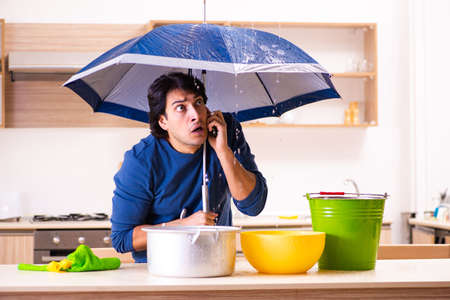We have found the article on Locating water leaks directly below on the web and accepted it made good sense to write about it with you on this site.

Early discovery of dripping water lines can reduce a possible catastrophe. Some tiny water leakages may not be noticeable.
1. Check Out the Water Meter
Inspecting it is a surefire way that aids you uncover leakages. If it moves, that suggests a fast-moving leak. This means you might have a sluggish leak that can also be underground.
2. Check Water Intake
If you find abrupt changes, regardless of your usage being the exact same, it indicates that you have leaks in your plumbing system. An abrupt spike in your bill shows a fast-moving leak.
A constant boost every month, also with the same behaviors, shows you have a sluggish leak that's also gradually rising. Call a plumber to completely examine your building, especially if you feel a cozy location on your flooring with piping underneath.
3. Do a Food Coloring Test
When it comes to water consumption, 30% comes from commodes. If the color in some way infiltrates your dish during that time without flushing, there's a leakage in between the tank as well as dish.
4. Asses Exterior Lines
Do not forget to inspect your outside water lines as well. Should water permeate out of the link, you have a loose rubber gasket. One small leak can squander bunches of water and also surge your water costs.
5. Evaluate and also Examine the Situation
Homeowners must make it a practice to check under the sink counters as well as even inside closets for any bad odor or mold and mildew growth. These 2 red flags show a leakage so punctual focus is required. Doing regular assessments, even bi-annually, can save you from a major issue.
More significantly, if you recognize your home is currently old, maintain a watchful eye on your heaters, hose pipes, pipelines and so on. Check for discolorations and weakening as many pipes and also devices have a life span. They will additionally naturally deteriorate as a result of tear and also wear. If you believe leaking water lines in your plumbing system, do not wait for it to rise. Call a professional plumber right away so you don't wind up with an awful mess in your house.
Early detection of leaking water lines can mitigate a potential disaster. Some small water leaks may not be noticeable. Examining it is a proven way that aids you find leakages. One little leakage can throw away tons of water and spike your water expense.
If you believe leaking water lines in your plumbing system, don't wait for it to escalate.
Tips for Detecting Hidden Plumbing Leaks
Check for Signs of Water Damage
We recommend that you check the following places for evidence of water damage:
Near where you store your water heater
Around your sump pump
In areas where pipes are visible
Underneath cabinetry or a vanity beneath a sink
Where your outside hose bib isIf water damage is present, you may also notice mold and/or mildew or smell a foul or musky odor. You might also be able to hear the sound of water running where it shouldn’t be.
Perform a Water Meter Test
One of the easiest ways to determine whether you have a hidden leak on your property is to test your water meter. Turn off all appliances in that use water and make sure you don’t have any faucets running. Locate your water meter and record the reading on it. Continue to leave everything off for a minimum of two hours and then go back and see the meter reading. If it’s a noticeable difference, chances are you have a hidden plumbing leak.
Monitor Your Outside Usage
As the seasons change, you might use more water to keep your yard lush and green and your flowers blooming. However, it’s important to routinely ensure that your sprinkler or irrigation system is working properly and that any outside faucets are completely off. This way you’re not wasting any water.
Do the Toilet Food Coloring Test
Are you kept up at night because your toilet continues to run? If you’ve noticed your toilet randomly refills, especially when it’s not in use, it could mean you have a defective flapper tank and water will leak into the bowl. Fortunately, there’s an easy (and kind of fun!) way to test whether you’re dealing with this issue. Grab some food coloring and add a few drops into your toilet’s tank. Wait 15 minutes and then check to see whether the water in the bowl is colored. If it is, you have a leak within your toilet and the internal assembly will need to be repaired or replaced.
https://www.carterservices.com/blog/2020/february/tips-for-detecting-hidden-plumbing-leaks/

As a devoted person who reads about Top leak detection hacks, I think sharing that excerpt was important. Those who appreciated our article kindly make sure you remember to pass it around. Thanks for your time. Visit us again soon.